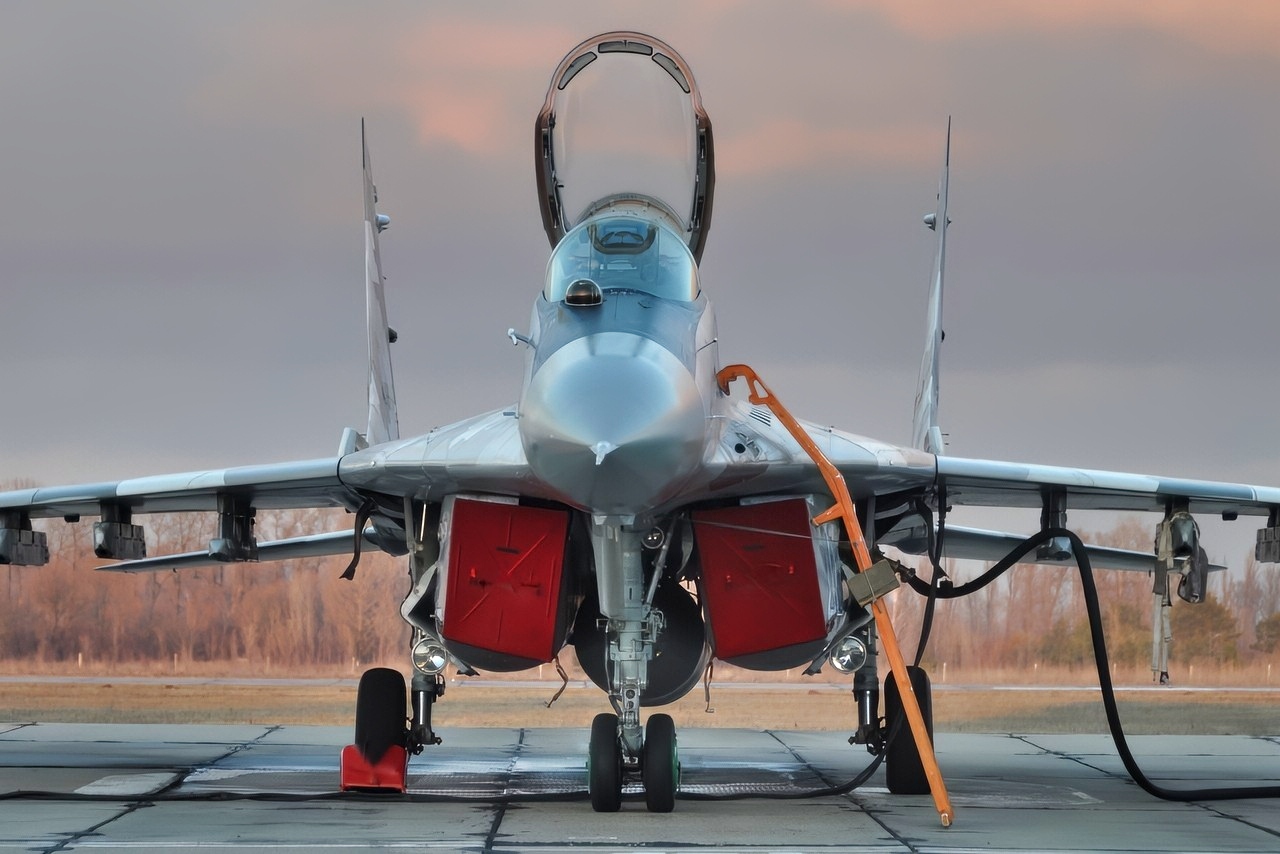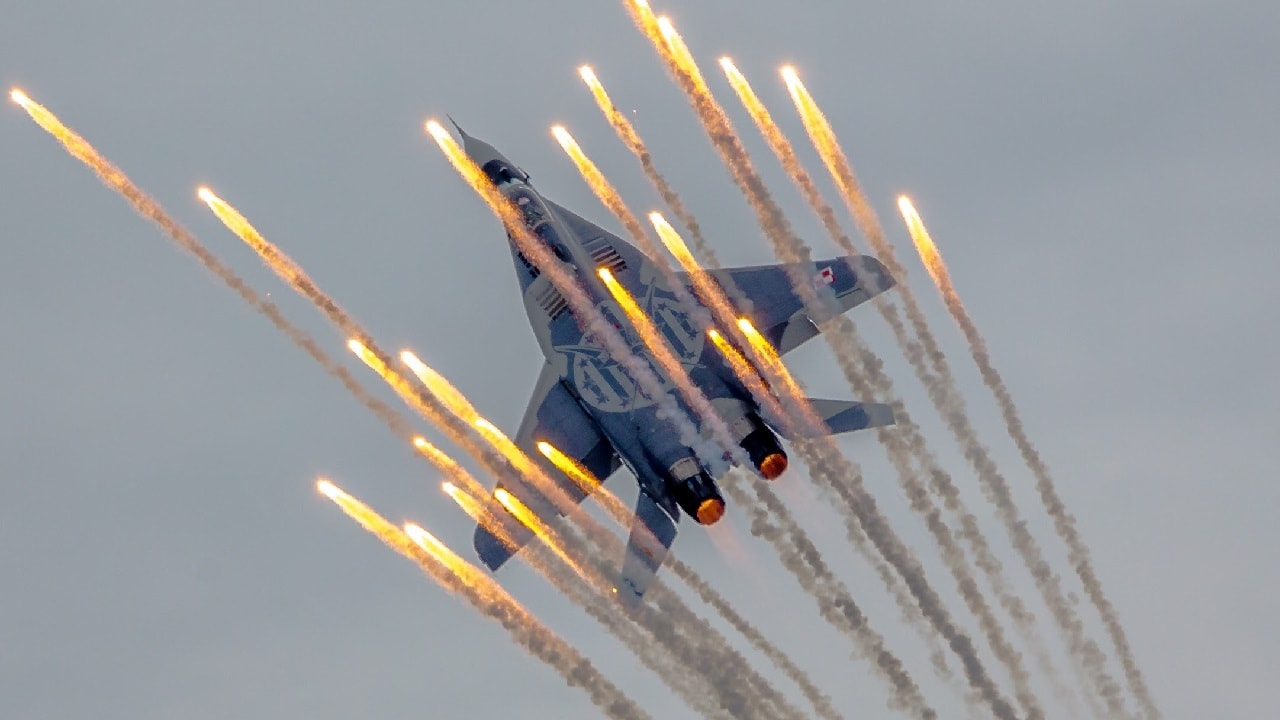Article Summary – In May 1989, Soviet MiG-29 pilot Aleksandr Zuyev pulled off one of the Cold War’s most daring defections.
-Disillusioned with the Soviet system, he drugged his squadron with a cake laced with sleeping pills, cut communications at his Georgian airbase, fought his way to a MiG-29, and flew it to Trabzon, Turkey.

MiG-29 Fighter. Image Credit: Creative Commons.

MiG-29 Fighter. Image Credit: Creative Commons.
-Ankara returned the jet to Moscow but kept Zuyev, who later secured asylum in the United States and briefed Western officials on Soviet aircraft, training, and tactics.
-His escape highlighted internal decay within the USSR’s armed forces and symbolized the broader unraveling of the Soviet empire.
This MiG-29 Defection Gave NATO a Front-Row Seat to Soviet Air Power
While it was not as capable as the MiG-31 or the Su-27 in terms of avionics, the MiG-29 could still match the performance of most aircraft flown by NATO at the time.
In May 1989, Soviet Air Force Captain Aleksandr Mikhailovich Zuyev defected from the USSR and flew a MiG-29 aircraft across the Black Sea and to Trabzon, Turkey.
His treachery and bravery provided NATO with valuable information on the MiG-29 and the Soviet Air Force as a whole in the later days of the Cold War.
Why a Soviet Pilot Defected to the West
Zuyev was born in 1961 and became a skilled interceptor pilot in the Soviet Air Force. By the late 1980s, he was stationed at Mikha Tskhakaya airbase in the Georgian SSR (now Senaki, Georgia), flying the MiG-29.The MiG-29 was one of the most advanced fighters in the Soviet Union’s arsenal at the time, designed to counter Western aircraft such as the F-15 and F-16.
While not on par with the Su-27 or the MiG-31, it featured advanced avionics, high maneuverability, and powerful engines, making it a prized asset in the Soviet fleet.
For the West, gaining access to such an aircraft, even briefly, was a rare and valuable opportunity.
Zuyev’s decision to defect was not impulsive. It was the result of growing dissatisfaction with the Soviet military system and the broader political climate.
He had reportedly been grounded for health reasons, which may have contributed to his disillusionment.
More importantly, he was deeply opposed to the Communist regime and longed for the freedoms he believed existed in the West. His defection was a carefully planned operation, reflecting both ideological conviction and personal desperation.
Zuyev Flies West with MiG-29
On May 19, 1989, Zuyev set his plan into motion. He baked a cake laced with sleeping pills and hosted a celebration at his base, claiming his wife was pregnant with a boy. Most of the personnel who attended the gathering consumed the cake and fell asleep.
With the base effectively incapacitated, Zuyev cut the telephone lines to prevent communication and attempted to access the aircraft.
He encountered resistance from guards and mechanics, resulting in a shootout in which he wounded a sentry and sustained an arm injury himself. Despite the chaos, he managed to board a MiG-29 that had been in storage and took off.
Zuyev had originally intended to destroy other aircraft on the ground to prevent pursuit, but he was unable to remove a gun lock, rendering the weapon inoperable. He then flew approximately 240 kilometers across the Black Sea to Trabzon, Turkey, where he requested political asylum and medical treatment.
His arrival in Turkey almost created a diplomatic crisis. The Soviet Union immediately demanded the return of both the aircraft and the pilot, labeling Zuyev a criminal and traitor. Turkey, caught between its NATO obligations and its desire to maintain good relations with Moscow, agreed to return the MiG-29 but did not extradite Zuyev.
A Big Win for the Intelligence Community
The aircraft was impounded and later returned to the Soviets, escorted out of Turkish airspace by Turkish Air Force jets. Zuyev, however, was allowed to remain in Turkey and eventually made his way to the United States, where he was granted political asylum.
He later became a consultant for the U.S. military and intelligence agencies, providing valuable insights into Soviet aviation and military procedures.
His knowledge of the MiG-29’s capabilities, Soviet training methods, and operational tactics was a significant asset to Western defense analysts.
Zuyev’s defection wasn’t the only case of such incidents. Throughout the Cold War, other Soviet personnel defected to the West, such as Viktor Belenko’s 1976 flight to Japan in a MiG-25.
These incidents revealed the vulnerabilities within the Soviet military and the extent of discontent among its personnel.
To the west, these defections reinforced the justness of their cause as many Soviet personnel were willing to throw away everything they had for a chance at escaping their communist regimes.
The Cracking Foundations of the USSR
The timing of Zuyev’s defection was particularly significant.
It occurred during the final years of the Cold War, a period marked by political upheaval and systemic collapse in the Soviet Union. Mikhail Gorbachev’s policies of glasnost and perestroika were transforming Soviet society, but they also exposed deep structural problems.
The military, long shielded from public scrutiny, was facing budget cuts, morale issues, and internal dissent. Zuyev’s defection can be seen as a symptom of these broader tensions and a harbinger of the Soviet Union’s eventual dissolution.
In the United States, Zuyev wrote a memoir titled Fulcrum: A Top Gun Pilot’s Escape from the Soviet Empire, in which he detailed his experiences and motivations.
He lived in the U.S. until he died in 2001 at the age of 39.
His story remains one of the most dramatic and impactful defections of the Cold War era, remembered not only for its daring execution but also for its symbolic resonance.
About the Author: Isaac Seitz
Isaac Seitz, a Defense Columnist, graduated from Patrick Henry College’s Strategic Intelligence and National Security program. He has also studied Russian at Middlebury Language Schools and has worked as an intelligence Analyst in the private sector.










